New Delhi: A six-year-old boy walked with his parents through the imposing gates of Lal Qila. He craned his neck to take in a giant, muscular image of Samrat Vikramaditya. The parents wanted to expose their child to the glories of the ancient Hindu king since school textbooks are largely silent on him. For them, watching the mahanatya on Vikramaditya was the perfect classroom.
The play was part of the Madhya Pradesh government’s broader effort to revive and reimagine ancient Hindu glory. It comes in the backdrop of the predominant national sentiment that Indian historiography prioritised Mughal rulers instead of frontloading the valour of Hindu kings and queens.
The choice of venue, however, wasn’t lacking in irony. The Madhya Pradesh government chose a Mughal-era monument, Delhi’s Red Fort, for the three-day event Vikramotsava, inaugurated on 12 April by Vice President Jagdeep Dhankhar with MP chief minister Mohan Yadav in attendance.
Inside, the boy, Vikas Singh, gazed spellbound at the spectacle. The play, Mahanatya Vikramaditya, opened with Vikramaditya riding on a white horse. Chariots thundered and LED graphics flashed as the king’s battle to reclaim Ujjain from the Shakas unfolded on stage. Vikramaditya was shown not just as a warrior king but as a patron of knowledge and learning.
In Modi’s decade, many heroic Hindu rulers have had a rebirth of sorts. Folklore and morality tales based on them are being dusted off and rebranded. They are being promoted as cultural icons in Rajasthan, Uttar Pradesh, Madhya Pradesh, Haryana, Maharashtra, and Delhi. From Samrat Vikramaditya to Shivaji, Sambhaji, Maharaja Agrasen, Hemu Vikramaditya, Rana Sanga, and Anangpal Tomar — Hindu warrior kings are popping up in textbooks, statues are being built and garlanded, street names changed, and long-hidden histories are being unearthed and brought to light. Seals and pottery shards are being showcased as archaeological evidence. Instilling Hindu pride is the goal of this new phase of historiography.
And the quest to discover more Hindu kings is in full swing.
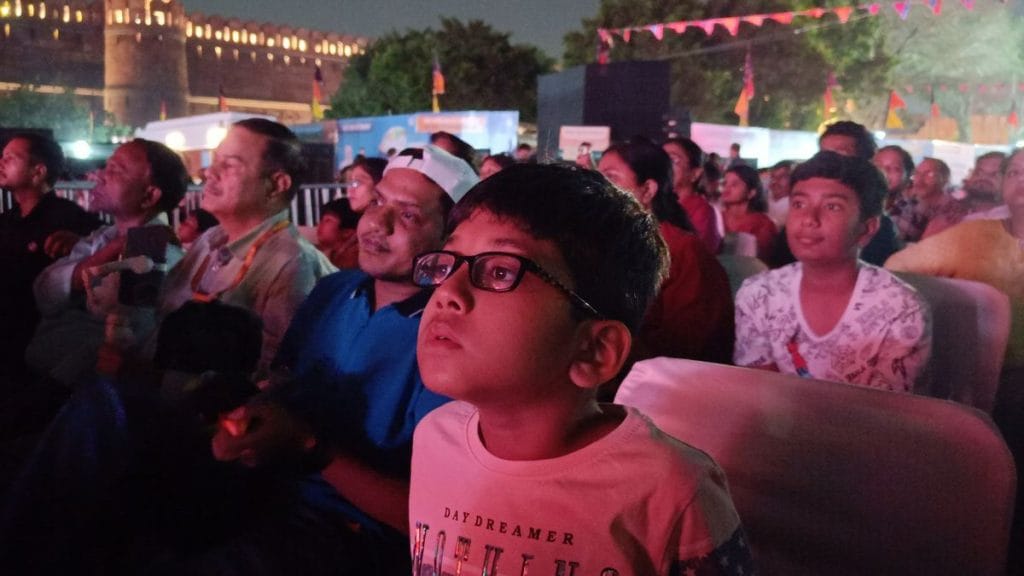
“We grew up with Mughal history and studied more about them in our textbooks. Hindu kings and their valour were totally absent. I don’t want my child to lose the history I lost. That’s why I have brought him to show him the valor and stories of Vikramaditya,” said the boy’s father Vijay Singh, a resident of Noida who brought his family to Lal Qila just for this.
Whether Vikramaditya actually ruled in 57 BCE, or ever existed at all, is a matter of scholarly debate. But the six-year-old boy is not too caught up in the details.
His wonder and excitement over the Malwa king’s rule comes from a potent mix of history, mythology, and raging nationalism.
“Programmes like this are the only way to know our heritage, history, and Hindu glory. It’s only because I saw this show that I know Vikramaditya is a bigger king than Sikander,” Vijay Singh added. “The time has come to mainstream Hindu history.”
As these kings return to public memory, battle lines are being drawn in the present as well. Defences and offences are being mounted in the names of these rulers.
Also Read: Sambhal’s massive makeover as holy Hindu city has begun. Skanda Purana is the blueprint
Past under pressure
The drive to reset and renew India’s tryst with history isn’t without its share of alarm. There is fear that in the grand history-as-a-politico-religious-project, the lines between fact and interpretation, evidence and mythology, are blurring.
“My poor country,” said Narayani Gupta, a renowned historian and former professor at Jamia Millia Islamia University. “Our history-writing has tended to emphasise the political. There might well have been other areas—cultural and economic — where rulers, Hindu, Jain, Muslim, were patrons. If research could be in these areas, it would be more interesting. Even military technology rather than a vague attribute of courage would be worthwhile.”
There is a need to include many things in history, but it is also true that if Aurangzeb is removed from history, then Shivaji’s entire life will become meaningless
-Raj Kishore Sharma, historian and author
For scholars, the rewriting of the past isn’t just happening in classrooms.
If history is taught to children, then adults imbibe it through garish films, popular literature, and newly drummed-up celebrations, according to Gupta.
“In both cases, justice is not done to a serious discipline. Science is treated seriously. Why not history?” she said.
Academics have been asking that question with increasing urgency, especially after references to the Mughals and Delhi Sultanate were dropped from class 7 NCERT textbooks, and replaced with chapters on Indian dynasties. Previously, it had trimmed sections on the Tughlaqs, Khaljis, Mamluks and Lodis.
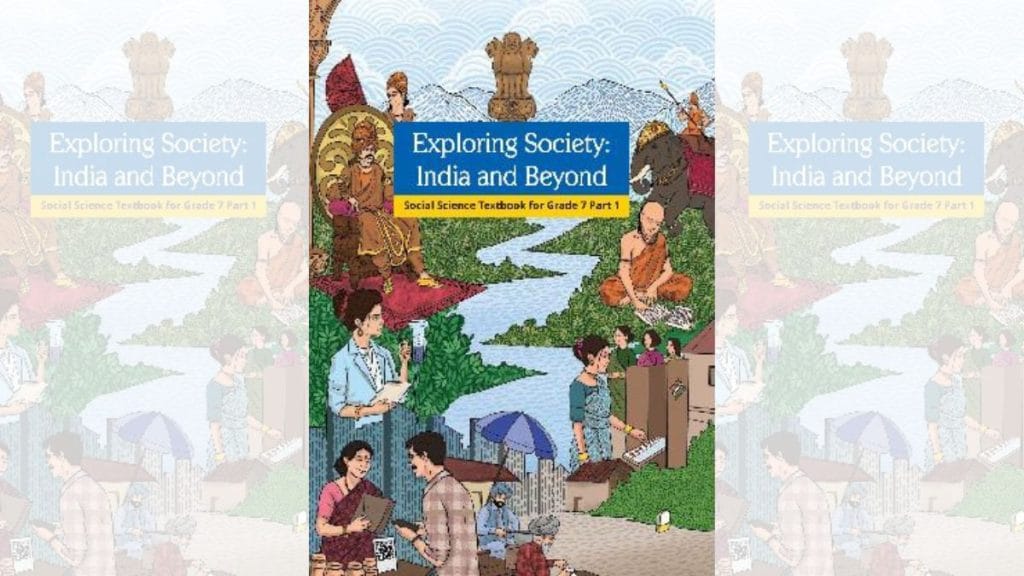
Agra-based public historian and author Raj Kishore Sharma warned that the new drive risks distorting historical facts and promoting a narrow view of Indian identity.
“These days, there is a lot of exaggeration about history. History should be discussed with context but political parties are using history for politics,” he said.
Some historians say it’s time to push back. Speaking at an event at Aligarh Muslim University last month, historian and AMU professor emeritus Irfan Habib called on his peers to hold the line.
“We can’t defend false perceptions but we can certainly defend the genuine facts of history as have been worked out by generations of professional historians,” he said.
New hero’s welcome for old kings
The quest to discover, unearth and promote the legacy of Hindu rulers is gaining momentum across India. In March, a Vishwa Hindu Parishad delegation “inspected” Humayun Tomb in Delhi even as protests demanding Aurangzeb’s tomb removal raged in Nagpur.
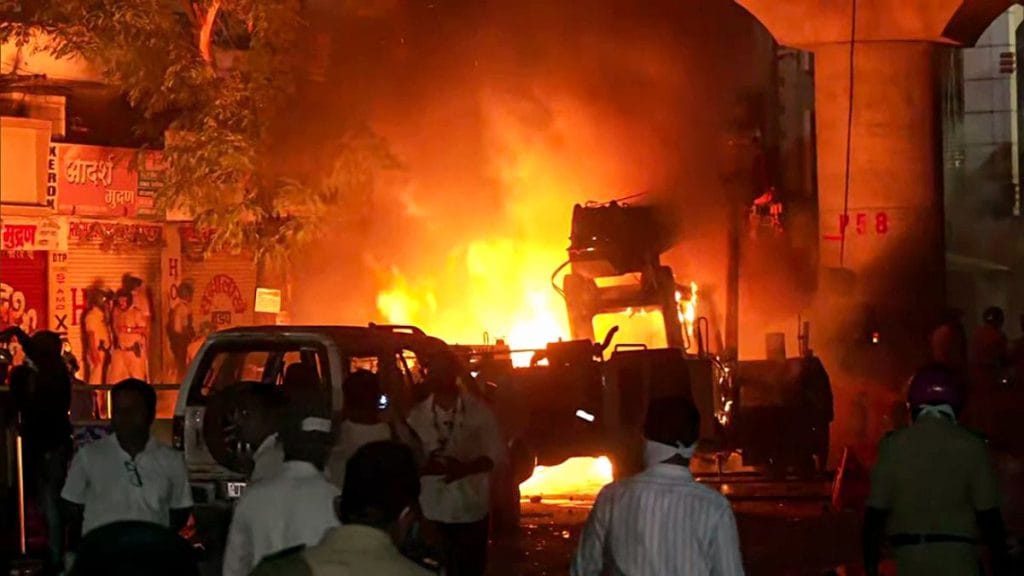
The VHP wants the history of Hindu kings of Delhi to be part of the capital’s landscape.
“Hemu Vikramaditya was such a brave king of the 15th century but his history is not found anywhere in Delhi,” said Surendra Gupta, president of the Delhi circle of VHP. “Delhi is not just Mughal history. Hindus have ruled here for thousands of years.”
Reviving the legacy of the Rajput ruler Anangpal II of the Tomar dynasty, credited with founding Delhi, has become part of the Modi government’s project to decolonise the capital’s history. The ASI has been digging at Purana Qila for traces of the “Pandava kingdom of Indraprastha” and roads named after Mughals have been renamed. Now the Tomars are being brought into the limelight through heritage walks, national seminars and the declaration of Anang Tal—a lake in Mehrauli created by Anangpal II—as a protected monument.
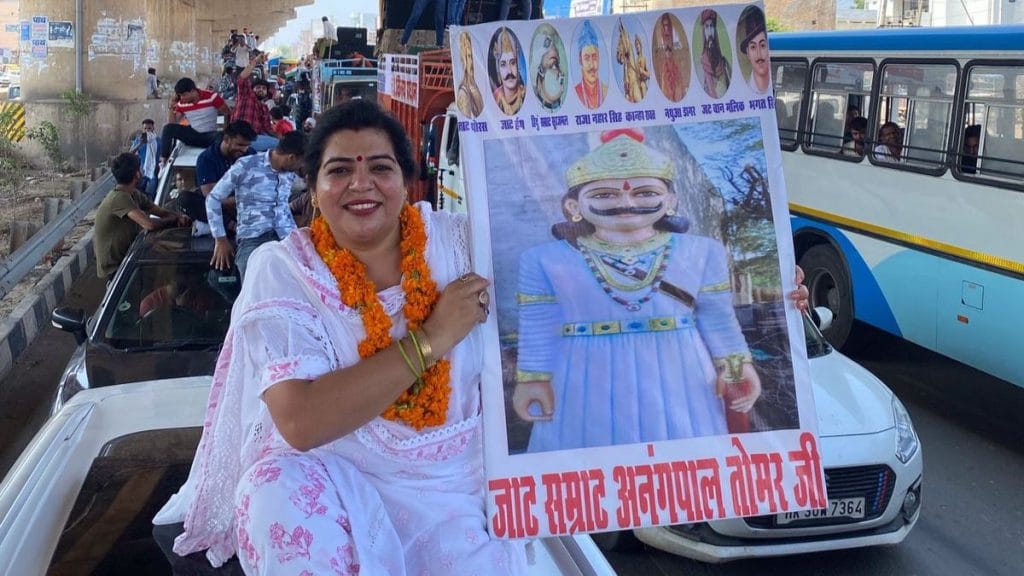
If it is Anangpal Tomar and Hemu Vikramaditya in Delhi, then it is Rana Sanga in Rajasthan, Shivaji and his son Sambhaji Maharaj in Maharashtra, Vikramaditya in Madhya Pradesh, Maharaja Agrasen in Haryana, and Suheldev in Uttar Pradesh — where, in 2021, Modi laid the foundation stone for a memorial to the 11th-century warrior king.
Cultural events, educational programs, and archaeological excavations are deployed to drum up curiosity among people. Films like Samrat Prithviraj (2022), based on the 11th-century king and starring Akshay Kumar, were made tax-free in various states. It was directed by Chandraprakash Dwivedi who became a household name in the 1990s when he played the titular role in the Doordarshan TV show Chanakya.
Our heritage was deliberately washed out. Vikramaditya was a sarvabhauma samrat (sovereign emperor)… Now slowly the work of finding and displaying this lost heritage is being done
-Sri Ram Tiwari, director of the Maharaja Vikramaditya Research Institute
As these kings return to public memory, battle lines are being drawn in the present as well. Defences and offences are being mounted in the names of these rulers.
In March, Samajwadi Party MP Ramji Lal Suman triggered outrage when he called 16th-century Rajput king Rana Sanga a traitor for bringing Babur to defeat Ibrahim Lodi. Violence erupted at his Agra residence, and on 27 April, Rajput groups attacked him in Aligarh. The Rajya Sabha saw an uproar.
The response from political leaders was swift and strident. Rajya Sabha chairman Jagdeep Dhankhar stepped in, calling Rana Sanga a national hero. Rajasthan BJP MLA Vishvaraj Singh Mewar, a descendant of the Rajput king, also contested Suman’s claims.
“It is factually incorrect to say that Babur was invited to India by Rana Sanga. In fact, he fought against Babur,” said Mewar to the media. Uttar Pradesh Chief Minister Yogi Adityanath hailed Sanga as a brave son of the soil.
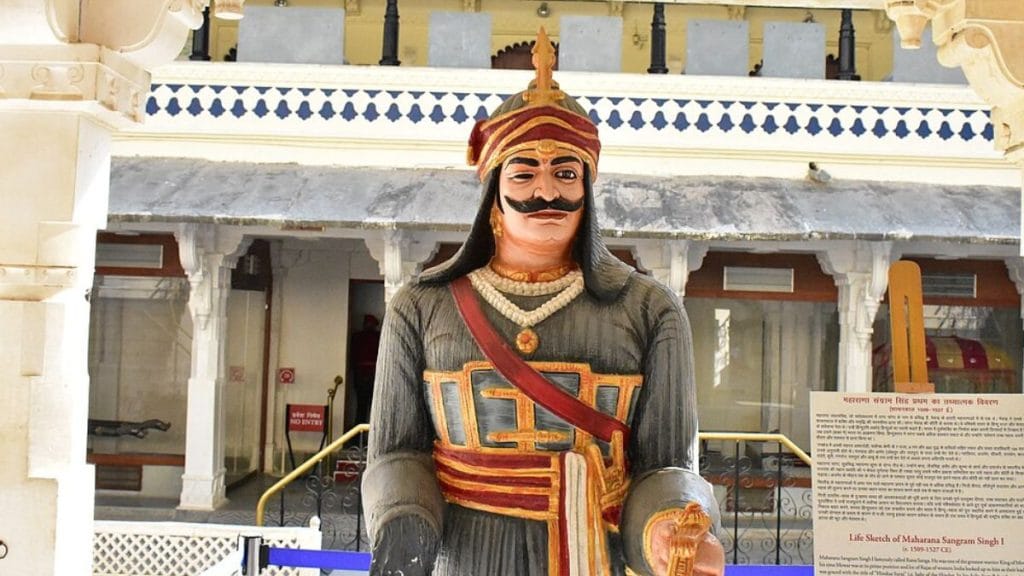
“His tale of patriotism and sacrifice are a golden chapter in history. His valour will continue to inspire pride in India for ages to come,” Adityanath posted on X.
Meanwhile, Maharashtra is set to take Shivaji beyond the state. It plans to build a string of memorials and museums dedicated to the Maratha king in Agra, one of the first such projects beyond Maharashtra’s borders. It was in Agra that Shivaji was once kept under house arrest by Aurangzeb. The Modi government is also planning to launch a special Chhatrapati Shivaji-themed railway tour that will start in Delhi and cover places such as Pune, Raigad, Nashik, Shirdi and Chhatrapati Sambhaji Nagar.
But as some historians point out, it’s a fine balance—diminishing the Mughals too much can dull the sheen of Hindu kings.
“There is a need to include many things in history, but it is also true that if Aurangzeb is removed from history, then Shivaji’s entire life will become meaningless,” said Raj Kishore Sharma.
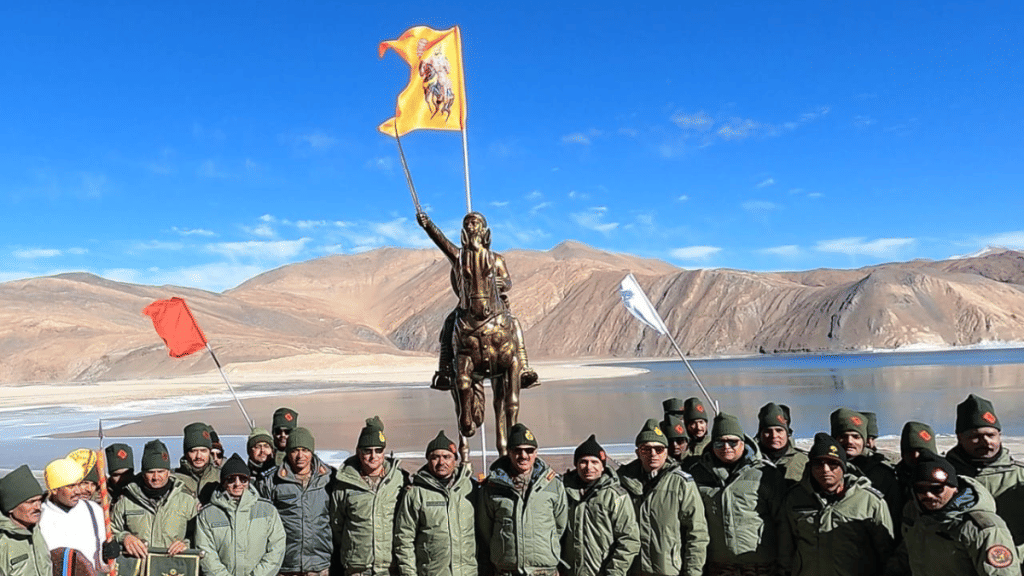
Meanwhile, beyond Delhi and Maharashtra, some Hindu kings are being anointed with a new national importance.
Earlier this month, Adityanath described the upcoming memorial to Maharaja Suheldev in Bahraich as a symbol of India’s victory and a challenge to foreign invaders. The Shravasti king is said to have defeated Ghaznavid general Ghazi Saiyyad Salar Masud in 1034.
And in Haryana, the Archaeological Survey of India (ASI) has taken over the task of unearthing ‘Hindu history’. In March, it resumed excavations at Agroha—the ancient capital of Maharaja Agrasen—after a 44-year hiatus. Earlier digs uncovered coins and references to its ancient name, Agradoka, mentioned in the Mahabharata.
There is no dispute about Sanga’s bravery but the fact is that he was not killed by a Muslim but by Rajputs who poisoned him. Shivaji was pressurised by Hindu king Mirza Raja Jai Singh for the treaty of Purandar
-Syed Ali Rezavi, professor of medieval history at AMU
According to some accounts, Agrasen ruled around 5,000 years ago. On 31 March, Union Home Minister Amit Shah unveiled the grand statue of him in Haryana and praised his governance.
“Maharaja Agrasen was a unique kind of ruler. It is said that in his time, (Agroha) had a population of 1 lakh people. Whenever a new person arrived there, they were given a brick and one rupee by every individual to help them build a house,” said Shah. “Maharaja Agrasen paved the way for the prosperity and welfare of every individual without burdening the state.”
Vikramaditya is still waiting to be included in school history textbooks, but last year the MP government introduced Vikram Samvat calendar in official use.
Vikramaditya takes the stage
At the historic Lal Qila, Mahanatya Vikramaditya showed the king driving out the Indo-Scythian Shakas from India and ruling over far-flung lands, including Iran, China, Sumer, Egypt, and Turkistan. The Shakas, a war-like tribe with roots in Persia, were cast as a foreign threat that the Malwa king pushed back.
Through a blend of drama, music, and visual arts, the play framed Vikramaditya’s era as a symbol of Indian resilience and patriotism.
“Katha sunaye Vikramaditya ki, jo the veer, gyan ki ganga kala ki dhara jiske raj me behti,” went one of the songs — Tell the story of Vikramaditya, who was a brave man, in whose reign the Ganga of knowledge and art flowed.
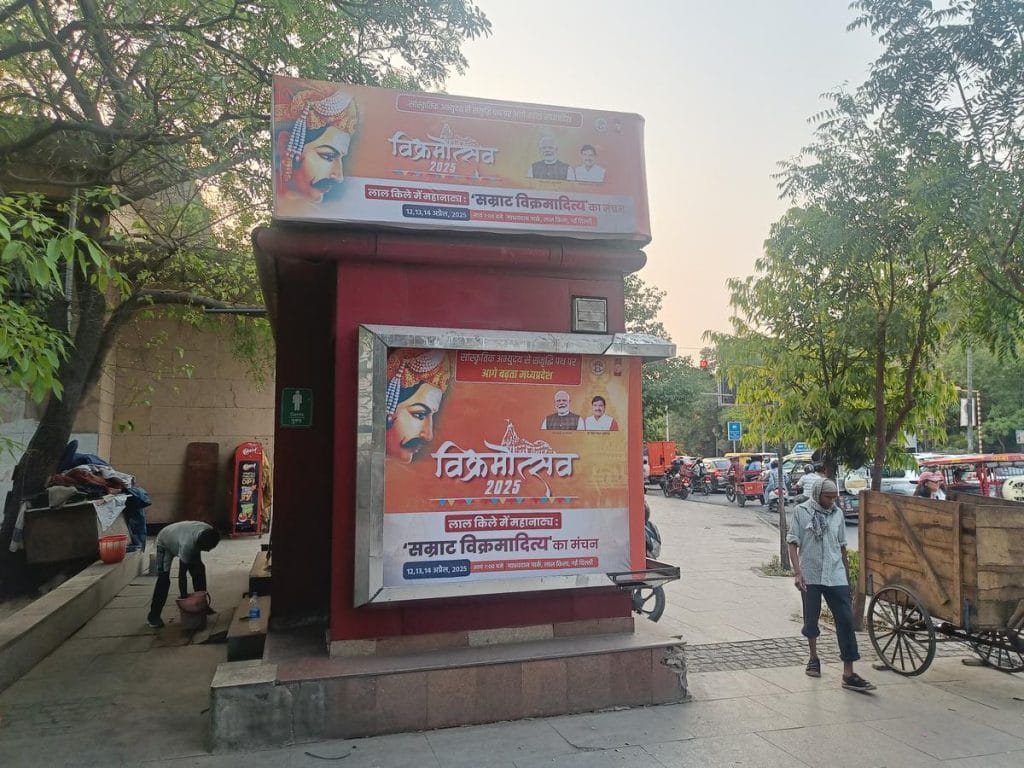
Until a few years ago, Madhya Pradesh CM Mohan Yadav himself would perform in the play in his hometown Ujjain, playing the role of Vikramaditya’s father.
“The legacy of Vikramaditya, remembered as a just and empathetic ruler, lives on, proving that Sanatan culture is unending, like an endless stream of the Ganga,” Yadav told the enthusiastic crowd at Lal Qila.
No expense was spared to promote the event. Massive posters were installed at every street corner in Delhi, from bus stops to Sulabh toilets.
At the Red Fort, the play also attributed a surprising feat to Vikramaditya— building a Ram temple in Ayodhya. In today’s climate of Ram temple euphoria, this arguably matters more than any other for the Hindutva sentiment.
“Our heritage was deliberately washed out. Vikramaditya was a sarvabhauma samrat (sovereign emperor) whose sword was stained with the blood of foreigners, not Indians. Now slowly the work of finding and displaying this lost heritage is being done,” said Sri Ram Tiwari, director of the Maharaja Vikramaditya Research Institute and the play’s scriptwriter. More than 200 artists performed in the production.
Since its 2007 debut in Ujjain, Mahanatya Vikramaditya has travelled to Indore and Hyderabad. The Lal Qila performance was its crowning moment, running to a full house for three days. For Tiwari, the venue was meaningful.
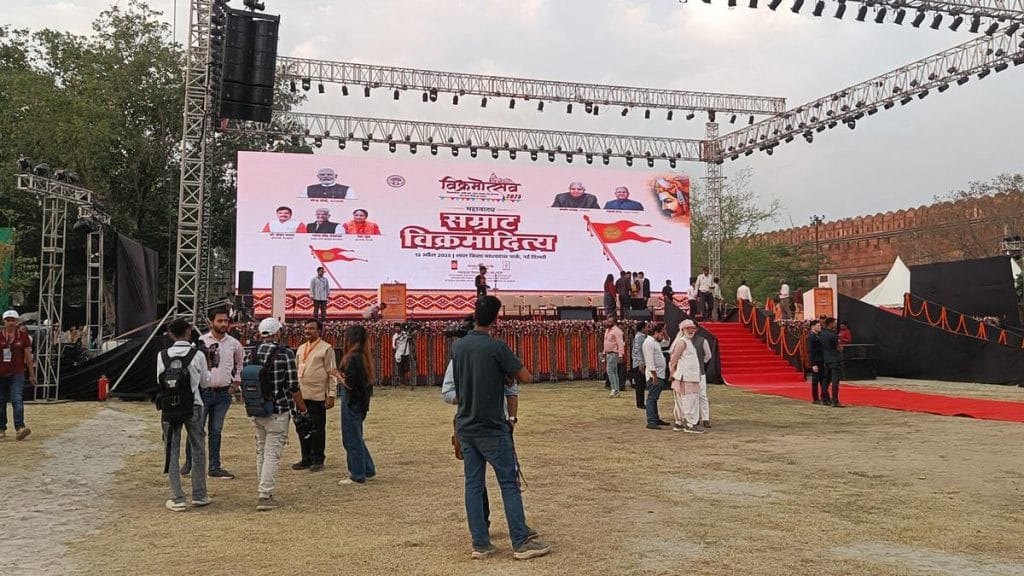
“This is the same area where Aurangzeb carried out a massacre. But we presented the legacy of India, not just the Hindu legacy,” he said. His next stops are Lucknow, Surat, and Kolkata.
Vikramaditya is still waiting to be included in school history textbooks, but last year the MP government introduced Vikram Samvat calendar in official use.
Tiwari added that there is sufficient archaeological and historical evidence for Vikramaditya, including coins and pottery, some of which were displayed at Lal Qila.
An entire gallery there was dedicated to Vikramaditya for three days, with plaques describing coins, pottery, and ivory currency uncovered during excavations.
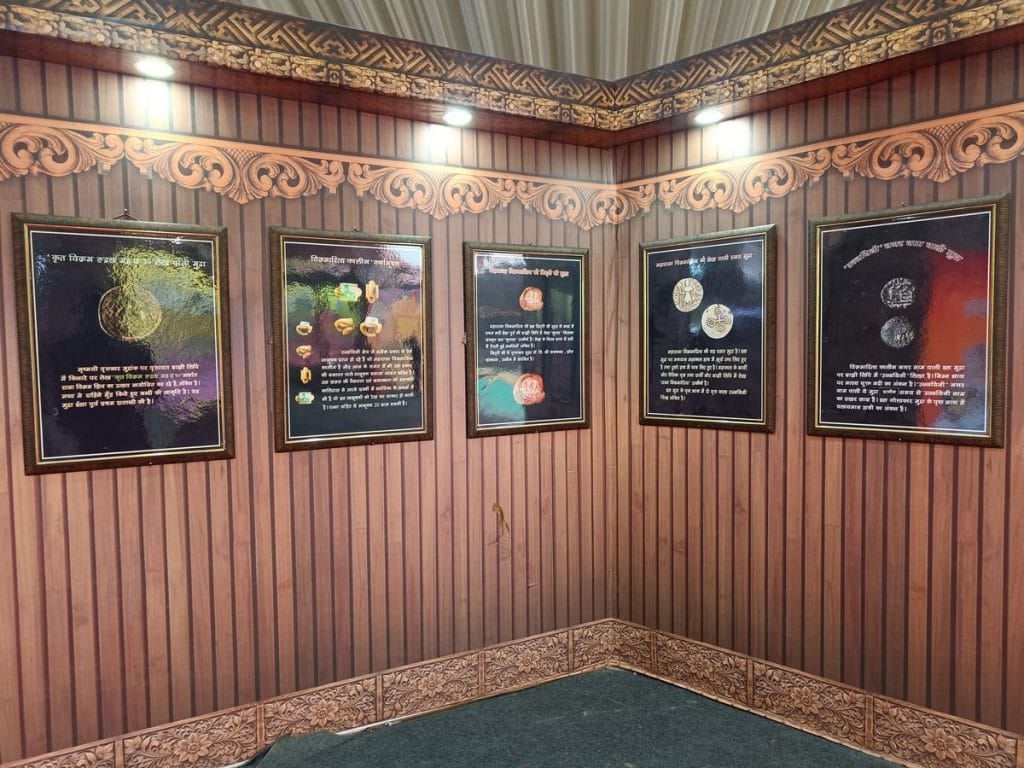
One plaque read: “On this coin bearing the name of the city from the Vikramaditya period, Ujjaini is written in Brahmi script. This coin is strong evidence of the name Ujjaini from ancient times.” Another cited the achievements of the ‘navratnas’ (scholars) in his court, with representative recreations. “In Varahamihir’s texts, there is mention of astrology, astronomy, mathematics and Yavan astrologers,” said one plaque.
Tiwari claimed that an Istanbul poet, Jirrham Bintoi, mentioned Vikramaditya in his writings 150 years before the birth of Prophet Muhammad. He quoted one of his Arabic verses: “Itrasshaphai Santul Bikramatul phehalameen karimun bihillahaya samiminela motakabbenaran bihillaha yubee qaid min howa” (Fortunate are those who were born during King Vikram’s reign, he was a noble generous, dutiful ruler devoted to the welfare of his subjects).
Also Read: Tamil Nadu is waging a new North-South clash of civilisations— Sivagalai to Keezhadi
History or myth?
Folktales have always celebrated Vikramaditya, say Madhya Pradesh historians.
The Lal Qila play drew from the well-known tales of Vikram and Baital as well. These parables were popularised through Amar Chitra Katha comics and the 1980s’ TV series Vikram aur Baital, which celebrated the king’s wisdom and wit through moral puzzles. While those stories were for children, it’s now part of the larger lore.
According to the MP government, this Vikram is no mere legend, but a historical figure. And that even the fables are facts.
“There are many folktales related to Vikramaditya, among which Singhasan Battisi and Betal Pachisi are prominent. These stories show how intelligent and great a ruler he was,” wrote CM Mohan Yadav in a booklet titled Bharat ka Navvarsh Vikram Samvat.
Tiwari also claims that Vikramaditya is mentioned in the Bhavishya Purana as the ruler of Malwa—present-day western Madhya Pradesh and southeastern Rajasthan—with Ujjain as his capital.
But questions over his existence have long persisted. The German philologist Max Müller, for instance, observed that there was no documentary evidence proving Vikramaditya’s reign. Historians are divided too.
In his book Ancient Malwa and the Vikramaditya Tradition (1969), eminent historian DC Sircar proposed that the Vikramaditya legends may have been inspired by Gupta emperor Chandragupta II, particularly his victory over the Shaka invaders of Ujjain.
“Vikramaditya’s historicity has not been proven anywhere. History should not be tampered with in the pursuit of bringing forward heritage,” said DP Dubey, retired professor of ancient Indian history at Allahabad University.
But with every passing year, as Vikramaditya’s exploits become bigger and grander, these notes of caution are fading into the background.
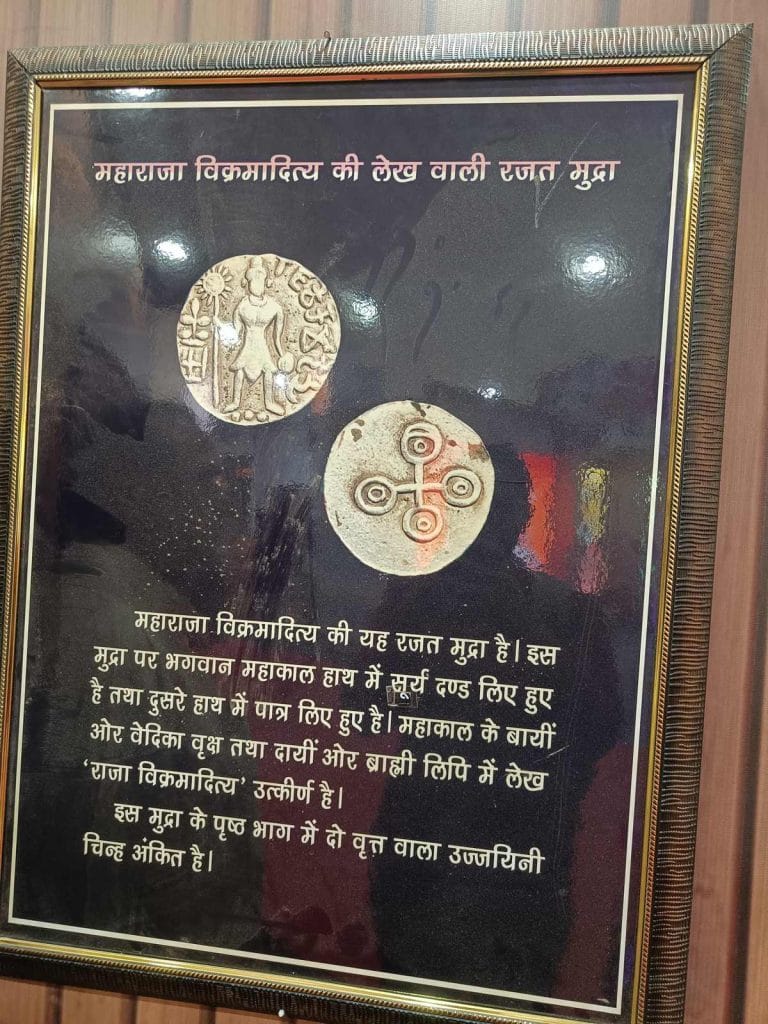
“There is an attempt to replace history with mythology. Myths have no backing. The current political power is tailoring history and promoting what it likes. But history is not for being proud but for drawing lessons,” said Syed Ali Rezavi, professor of medieval history at Aligarh Muslim University. “What the BJP is doing is called wishful history.”
What he finds “reprehensible” is the division of India’s history into a Hindu-Muslim narrative. The past defies clear-cut boundaries.
Shivaji’s generals were Muslims. Rana Sanga’s associates Hassan Khan Mewati and Mamud Lodi were Muslims.
“There is no dispute about Sanga’s bravery but the fact is that he was not killed by a Muslim but by Rajputs who poisoned him. Shivaji was pressurised by Hindu king Mirza Raja Jai Singh for the treaty of Purandar,” Rezavi added.
At the Red Fort, the play also attributed a surprising feat to Vikramaditya— building a Ram temple in Ayodhya. In today’s climate of Ram temple euphoria, this arguably matters more than any other for the Hindutva sentiment. There is no evidence that Vikramaditya built a Ram temple, but that hasn’t stopped the story from entering the public sphere. It was even mentioned during the Ayodhya Ram Mandir case arguments in the Supreme Court.
“Vikramaditya believed in Lord Ram and built a temple in Ayodhya which was demolished by Babur’s general in 1528,” boomed the narrator’s voice during the play.
The six-year-old boy watched the drama unfold with wide-eyed wonder. And when Vikramaditya rode onto the stage astride a white horse, he cheered and clapped.
(Edited by Asavari Singh)



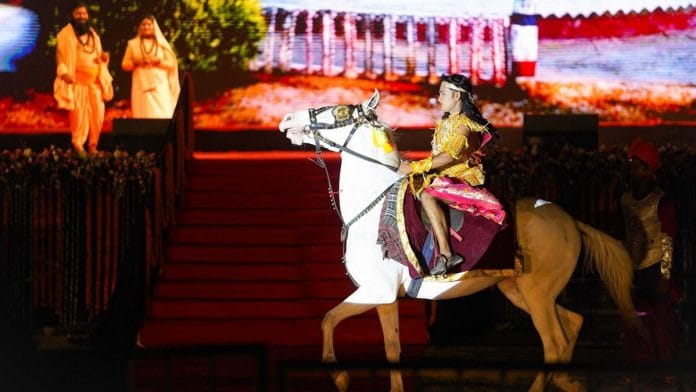



Shouldn’t we add Prime Minister Indira Gandhi, circa 1971, to the list.